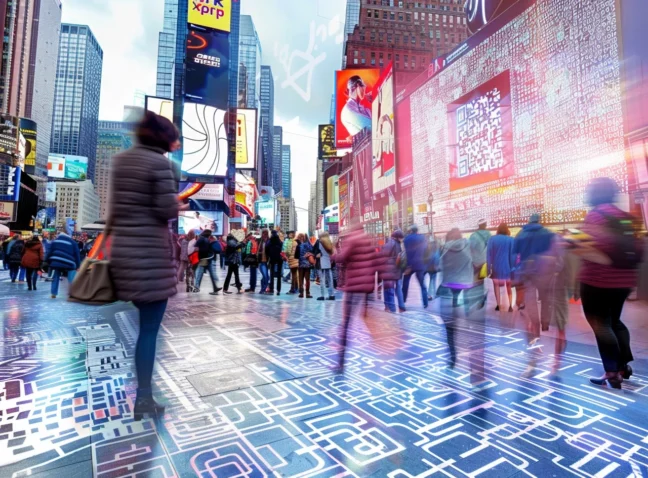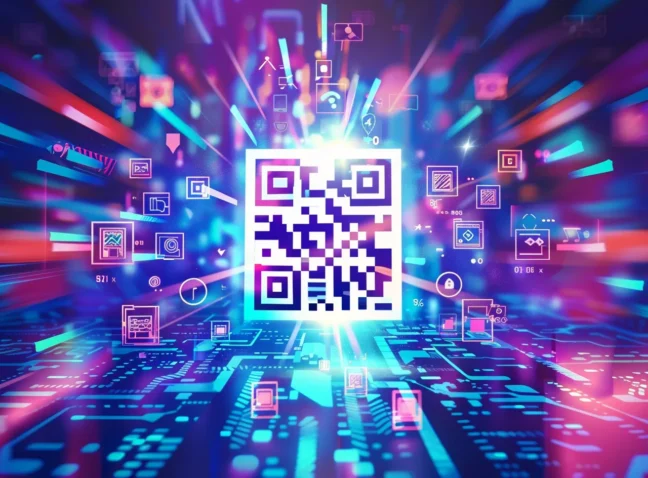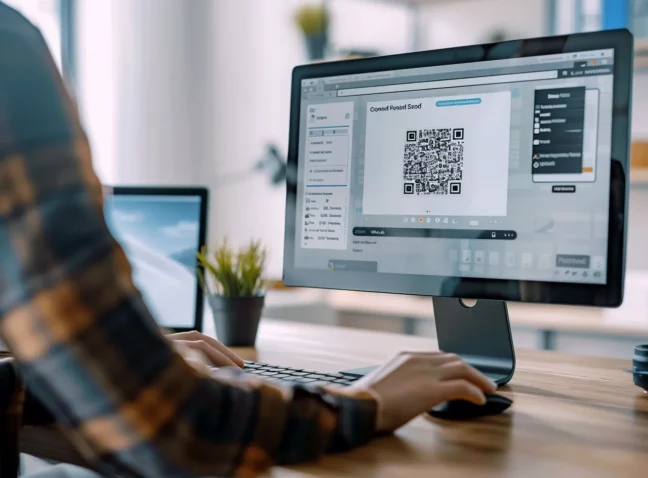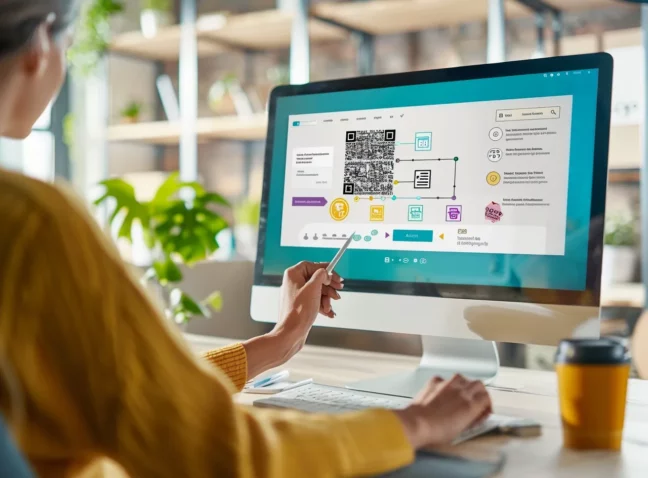In the vibrant world of digital marketing, advertising banners have always been a go-to for capturing consumer attention with their visual appeal. But let’s take it up a notch, shall we? The real magic happens when we transform these banners from mere eye-catchers to gateways of engagement. That’s where the modest yet mighty QR code comes in! With just a simple addition, any banner can become an interactive experience. By seamlessly linking the physical and digital realms, QR codes invite your audience to connect with your brand in a single scan. This integration not only enhances user experience but also provides valuable data to refine your marketing strategies. So, are you ready to discover how this small square can make a big impact? Keep reading to find out how QR codes can transform your advertising banners into powerful tools for audience engagement and data collection.
Why QR Codes for Advertising Banners Dominate Engagement
In today’s digital landscape, where banner advertising remains a pivotal tool for online marketers, the integration of QR codes has emerged as a game-changer. QR codes seamlessly blend traditional web ads with interactive content delivery, combating the widespread issue of ‘banner blindness’ that plagues conventional advertising.
QR codes inject a fresh aesthetic appeal into banners, ensuring they stand out amidst the noise of online clutter. Unlike static banners, QR codes offer a gateway to diverse content formats, including videos, PDFs, and direct app downloads, expanding the possibilities of engagement.
Moreover, QR codes simplify user interaction, allowing perfect access to information with a quick scan. By eliminating the need for manual typing or navigating through links, they significantly enhance user engagement rates.
Furthermore, the dynamic nature of QR codes enables real-time updates and edits, ensuring that banner content remains relevant and timely. This flexibility is invaluable for businesses running time-sensitive promotions or those needing to adapt swiftly to market changes.
In essence, integrating QR codes into advertising banners is not just an evolution; it’s a strategic imperative in today’s digital marketing landscape, offering enhanced engagement, versatility, and adaptability for businesses aiming to capture audience attention and drive results.
QR Codes Revolutionize Banner Advertising in Digital Marketing Strategy
Web banners have long served as a cornerstone of online advertising, offering a straightforward means of directing traffic to desired destinations. Yet, in an era dominated by digital noise, traditional banners often struggle to capture audience attention amidst the sea of distractions. This phenomenon, known as ‘banner blindness,’ poses a significant challenge to marketers seeking effective engagement.
Enter QR codes – a modern solution to an age-old problem. By integrating QR codes into banners, we transcend the limitations of conventional advertising, transforming static links into portals of dynamic content. QR codes empower users to seamlessly access a wealth of information, from exclusive promotions to detailed product insights, with just a scan. And the numbers speak for themselves: a 20% increase in consumer engagement, a 40% surge in QR code scans, and a staggering 70% of consumers finding QR codes invaluable for product research. With the potential to elevate conversion rates by up to 30%, QR codes redefine the efficacy of banner advertising in today’s ever-evolving digital landscape.
Unveiling the Power: QR Codes Transform Banner Advertising
Integrating QR codes into promotional banners marks a significant stride in bridging the physical and digital realms of advertising. These compact, yet powerful codes offer a direct link to a wealth of online content, enhancing user interaction with the brand. By simply scanning a QR code on a banner, consumers are immediately transported to a digital destination, whether it be a promotion, product details, or an engaging brand story. This method not only fosters an interactive connection between the consumer and the brand but also taps into the growing trend of mobile-first experiences in advertising. It’s a clever blend of convenience and technology that caters to the modern consumer’s preference for quick and accessible information:
Statistical Insights:
- Consumer Engagement Uplift: QR codes have been reported to increase consumer engagement by a notable 20%. This statistic highlights the growing interest of consumers in engaging with brands through convenient digital means.
- Usage for Discounts and Promotions: Reflecting a shift in consumer behavior, over half of the consumers have utilized QR codes to access discounts or promotions. This trend underscores the effectiveness of QR codes in driving promotional campaigns.
- Growth in Scans: The past year alone saw a 40% growth in QR code scans. This surge indicates a rising familiarity and comfort among consumers in using QR codes as a tool for interaction and information acquisition.
- Helpfulness in Product Information: Approximately 70% of consumers appreciate QR codes for their ability to provide immediate access to product information. This statistic speaks to the utility of QR codes in enhancing the consumer’s shopping experience.
- Boost in Conversion Rates: The use of QR codes in marketing campaigns has been linked to an increase in conversion rates by up to 30%. This significant rise points to the effectiveness of QR codes in not just attracting consumers but also in driving them towards a desired action or purchase.
The Drawbacks of QR Codes for Display Ads: Are They Worth It?
Incorporating QR codes into advertising banners brings numerous benefits. Firstly, they inject innovation, adding a fresh element that captivates attention and minimizes banner fatigue. These codes extend the functionality of banners, accommodating various content formats like videos and product specifications, enriching the user experience right from the banner itself.
Furthermore, QR codes simplify user interaction, offering a hassle-free solution for accessing additional information without the need for manual input. This ease of use enhances engagement rates significantly.
The dynamic aspect of QR codes allows for swift content updates without altering the banner, ensuring that campaigns stay current and adaptable to evolving needs. Additionally, the analytics provided by QR codes offer valuable insights into campaign performance, enabling informed decision-making for future marketing endeavors.
QR Codes for Banner Ads: The Downside You Need to Know
In the realm of digital advertising, QR codes have emerged as a tool for bridging the gap between physical banners and online content. However, their practicality as an effective marketing strategy is under scrutiny. Despite the simplicity and innovation they promise, the reality of their adoption and impact paints a different picture. A closer examination of consumer behavior and industry statistics reveals some crucial insights that challenge the effectiveness of QR codes in banner ads:
- Adoption Rates in the U.S.: A surprisingly low percentage of American consumers, only 22%, have ever interacted with a QR code. This statistic suggests a significant gap in the market penetration of this technology, reflecting its limited reach within the general population.
- Scanning Rates: The average scanning rate of QR codes stands at a mere 2.3%. This low figure indicates that even when QR codes are available and accessible, the majority of consumers choose not to engage with them, questioning their role as a viable marketing tool.
- Security and Privacy Concerns: A considerable number of consumers, accounting for 41%, express reluctance to scan QR codes due to security and privacy worries. This apprehension highlights a major barrier in the path of QR code adoption, as concerns over digital safety continue to grow.
- Convenience Factor: According to consumer feedback, more than half, specifically 51%, find QR codes inconvenient to use. This inconvenience is a critical factor contributing to the lack of engagement with marketing materials that incorporate QR codes.
- Demographic Preferences: The usage of QR codes shows a distinct skew towards younger demographics. While 58% of Gen Z and 46% of millennials have scanned a QR code in the past month, the frequency significantly drops in older age groups, indicating a demographic divide in the acceptance and use of this technology.
QR Codes: Top Brands Using Advertising Banners
Despite the numerous benefits, the use of QR codes in advertising banners is not without drawbacks. One significant concern is the dependency on user technology and behavior. Not all users may be familiar with QR codes or have a QR scanner readily available. This technological barrier can limit the reach and effectiveness of QR-code-enabled banners, especially among certain demographics less accustomed to such technology.
Another issue is the potential for security risks. QR codes can be used maliciously to redirect users to harmful sites or phishing scams. This risk might deter some users from scanning codes, especially if they are wary of cybersecurity threats.
Furthermore, the effectiveness of QR codes in banners is heavily reliant on the design and placement. Poorly designed or inconspicuously placed codes may go unnoticed or be difficult to scan, negating their intended benefits. However, when implemented strategically, QR codes can be a powerful tool in bridging the gap between digital and physical advertising spaces. The key lies in understanding and mitigating the challenges while capitalizing on the immense potential of this technology. Let’s consider some compelling success stories in the industry:
- A significant majority, over 65% of smartphone users, have engaged with QR codes in the last year, demonstrating a substantial engagement potential for brands utilizing these codes. This high interaction rate suggests that despite some technological barriers, a large segment of the population is not only familiar with QR codes but actively using them, making them a valuable tool in reaching and engaging with customers.
- Coca-Cola’s integration of QR codes into their advertising banners resulted in a 29% increase in customer engagement. This statistic is a testament to the power of interactive advertising. By embedding QR codes in their banners, Coca-Cola was able to create a more engaging and memorable experience for consumers, leading to a significant rise in engagement compared to traditional advertising methods.
- Adidas reported a 40% boost in website traffic after incorporating QR codes into their outdoor advertising banners. This remarkable increase highlights the seamless integration of offline and online marketing channels. QR codes provide a quick and easy way for consumers to transition from viewing an outdoor advertisement to visiting a website, thereby driving online traffic and engagement.
- Starbucks leveraged QR codes in their banner ads, resulting in a 25% rise in app downloads and a 35% increase in in-store visits. This strategy not only enhanced digital engagement through app downloads but also translated into physical foot traffic to their stores. The dual impact of QR codes in both the digital and physical realms underscores their versatility and effectiveness as a marketing tool.
- Toyota saw a 50% uptick in test drive bookings after deploying QR codes in their outdoor advertising banners. This significant increase in customer interaction demonstrates how QR codes can be effectively used to prompt immediate action from consumers, in this case, booking a test drive, thereby directly contributing to the sales funnel.
QR code generator for advertising banners
Ready to transform your promotional displays with the magic of QR codes? Dive into the world of perfect digital integration by visiting our QR code generator page. Here, you’ll find the tools to connect your audience with your digital presence in a snap. Let’s make your promotional banners not just seen, but interacted with!





